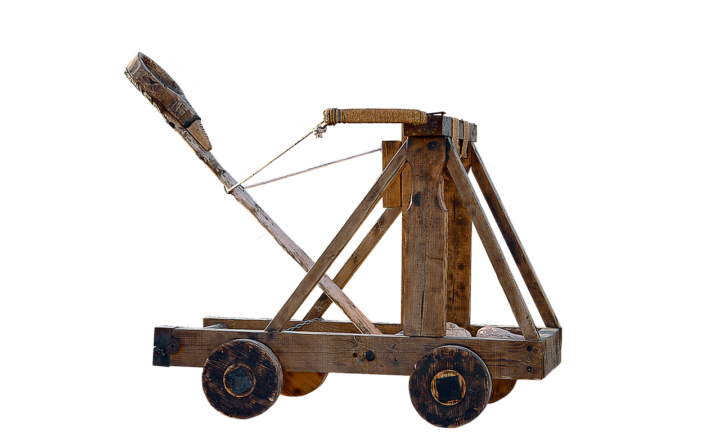Weapons Through the Ages: A Journey from Swords to Smart Bombs
November 18, 2024

The history of weapons is part of humanity’s quest for power and protection. Over the centuries, these tools of warfare have evolved dramatically, transforming not just how battles are fought, but also the fundamental nature of conflict itself. From the ancient craftsmanship of swords forged in fire, to the pinpoint precision of smart bombs guided by technology, weapons have radically changed. In this article, we’ll take an extensive journey through the ages exploring the evolution of weaponry, its implications on society, and the human experience.
1. The Dawn of Weaponry: Primitive Tools
In the earliest days of humanity, survival dictated the need for tools. Primitive weapons such as sharp stones, wooden clubs, and bone implements were crafted for hunting and protection against predators. As communities began to form, these tools were repurposed for conflict amongst tribes. The development of the spear marked a significant turning point, allowing early humans to engage in both hunting and warfare from a safer distance.
The spear would evolve through the ages into the thrusting javelins, and its use would remain integral in warfare. The invention of the bow and arrow provided another powerful upgrade, allowing hunters and warriors to strike from afar with deadly accuracy, which would forever change tactics in both hunting and warfare.
2. The Age of Blades: Swords and Shields
With the advancement of metallurgy, blades became more sophisticated. The Bronze Age saw the emergence of bronze swords, which offered advantages over their stone and wood predecessors. By the time of the Iron Age, weapons like the sword, spear, and dagger became staples in combat, with the long sword and short sword defining warriors across various cultures.
The role of the shield emerged alongside these swords, providing defense for soldiers in open combat. Ancient civilizations, including the Greeks and Romans, relied heavily on infantry formations, with their swordsmen effectively executing strategies due to their weapon’s design and functionality.
As weapons evolved, so did warfare—the birth of cavalry units transformed battles, as mounted soldiers wielded swords became the epitome of elite forces in their times. The sword was no longer merely a tool of war; it became a symbol of honor, nobility, and power. Knights in shining armor epitomized the age of swords, romantically depicted in literature and folklore as protectors of the realm.
3. The Gunpowder Revolution: Firearms and Cannons
The discovery of gunpowder in the 9th century in China was a watershed moment for warfare. The introduction of firearms forever changed military tactics. By the 15th century, cannons began dominating the battlefield, allowing for the destruction of fortified positions previously deemed impregnable. The once steadfast knight was suddenly vulnerable to gunfire.
Muskets became common infantry weapons, leading to the classic battle formations of early modern warfare. The transition from swords to guns was not instant, and for centuries battles were fought with a mix of both, as armies grappled with the implications of this technological shift.
The use of firearms reached its zenith during conflicts like the Thirty Years’ War, where pike and shot formations showcased a combination of long pikes and muskets, demonstrating evolving military doctrine and collective firepower.
4. Industrialization and Modern Warfare: Automatic Weapons
The 19th and 20th centuries saw rapid advancements due to the Industrial Revolution. Innovations led to the creation of automatic weapons like the machine gun, which drastically altered the battlefield landscape, rendering traditional formations obsolete.
World War I witnessed machine guns mowing down waves of infantry, leading to trench warfare, where both sides found themselves locked in grim stalemates. The horrors of war were further exacerbated by the introduction of tanks, planes, and artillery, reflecting a militarization and desensitization to warfare previously unseen in history.
World War II continued this trend, with the development of more sophisticated technology including the submachine gun, assault rifles, and eventually, the atomic bomb. A new era arose where sheer destructive power defined the stakes of warfare, leading to a rethinking of military engagements and international relations.
5. The Cold War and Modern Military Technology
The Cold War era gave rise to the arms race, where nations competed to develop and stockpile nuclear weapons. This period saw the sophistication of military technology evolve rapidly. The need for precision led to the development of smart munitions—bombs and missiles guided by sophisticated systems that could strike targets from great distances.
The Gulf War exemplified this with the use of precision-guided munitions, which ushered in an era of clean warfare; while still resulting in civilian casualties, the technology designed to minimize collateral damage was a significant development.
This age of technology not only focused on the weapons of war, but also integrated intelligence-gathering capabilities through satellites and unmanned aerial vehicles (drones). Revolutionary changes in warfare left conventional armies reassessing their strategies and the nature of conflict.
6. The Future: Autonomous Weapons and Ethical Considerations
Today, we stand on the brink of a new frontier in military technology. Autonomous weapons—robots capable of making decisions and executing strikes without direct human intervention—pose ethical dilemmas and unprecedented consequences for warfare. As these technologies develop, questions arise concerning accountability, morality, and the potential for conflict escalation.
The increasing reliance on artificial intelligence in warfare presents both enhancements in battlefield tactics and significant moral questions that humanity must confront as we navigate through an era dominated by technology.
The future of warfare some envision is akin to science fiction, featuring drone swarms and robotic ground units capable of functioning collaboratively. This evolution from swords to smart bombs showcases that while technology enables higher precision and efficiency, it also requires stringent oversight and ethical governance.
Conclusion
From the simple stone weapons of prehistory to the complex military drones of the future, the history of weaponry reflects humanity’s growth and the evolution of society itself. Each era of weaponry has paralleled advancements in technology, reshaping how we engage in conflict and establishing deep-seated implications on human life. As we stand at the precipice of autonomous warfare, it’s essential to reflect on the past, ensure a responsible future, and maintain a dialogue about peace and humanity’s trajectory in these turbulent waters of progress.








